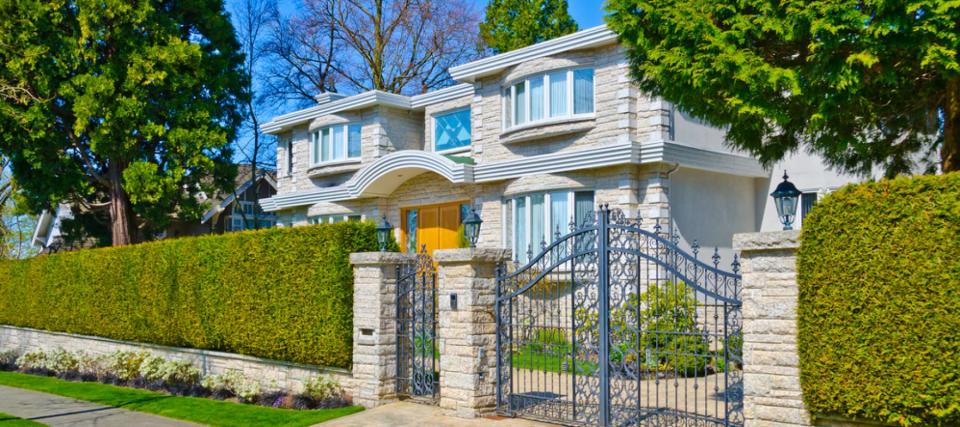‘Not pretty’: Rising mortgage rates slam the gate shut on hopeful homebuyers

U.S. mortgage rates moved back up in anticipation of next week’s Federal Reserve meeting, where policymakers are expected to hike the benchmark borrowing rate for the third time this year.
The increase on the 30-year fixed-rate mortgage follows a three-week stretch of declining rates — a boon to borrowers looking to buy before loans got even more expensive.
For many, though, those dips weren’t enough to take the sting out of financing a home.
“The interest-rate picture is not pretty for residential real estate,” says Washington, D.C. real estate agent Corey Burr.
Factoring in soaring home prices and higher interest rates, Burr says the cost of home ownership has increased by about 42% since May 2021.
30-year fixed-rate mortgages
The average rate on America’s most popular home loan is now 5.23%, up from 5.09% last week, housing finance giant Freddie Mac reported on Thursday.
A year ago at this time, the 30-year rate averaged 2.96%.
“After little movement the last few weeks, mortgage rates rose again on the back of increased economic activity and incoming inflation data,” says Sam Khater, Freddie Mac’s chief economist, referring to the coming update of the Consumer Price Index, a popular measure of inflation.
Many Americans worried about higher consumer costs are equally concerned about the impact the Fed’s response will have on borrowing. The central bank is expected to raise its federal funds rate by a half percentage point next week as it tries to beat back inflation.
Still, the upcoming hike shouldn’t have as big of an influence on mortgage rates as it did after the Fed’s increases earlier this year, says Nadia Evangelou, senior economist with the National Association of Realtors.
“It seems that mortgage rates have already priced in some of the effects of the upcoming Fed’s rate hikes,” she says.
15-year fixed-rate mortgages
The interest rate on 15-year fixed rate mortgages averaged 4.38% this week, up from last week when it was 4.32%, Freddie Mac says. Last year at this time, the 15-year rate averaged 2.23%.
The higher rates — a byproduct of the Fed’s recent hikes — have made a deep cut in the housing market, as mortgage activity continues to decline.
Loan applications fell 6.5% last week, according to new data from the Mortgage Bankers Association.
“Weakness in both purchase and refinance applications pushed the market index down to its lowest level in 22 years,” says Joel Kan, the Mortgage Bankers Association’s associate vice president of economic and industry forecasting.
5-year adjustable-rate mortgages
The average rate on a five-year adjustable-rate mortgage, or ARM, averaged 4.12% this week, up from 4.04% last week.
A year ago at this time, the 5-year ARM averaged 2.55%.
ARMs have interest rates that adjust in tune with the prime rate. Interest costs start off low but can increase sharply once the initial fixed-rate period is over.
If you’re not planning to own your home for long, an ARM can be a smart bet. And if rates were to fall in the future, you could always refinance into a longer-term loan with a lower rate.
How high will rates go?
Evangelou of the National Association of Realtors expects borrowing costs to average between 5.6% and 5.7% toward the end of this year.
Even though the higher figures are well above the December 2020 low of 2.67%, they aren’t out of scale when compared with a broader time period. In the 1980s, mortgage rates rose to nearly 19%.
“Although mortgage rates will continue to rise in 2022, don’t expect to see the same sharp increases that the market experienced in March and April,” Evangelous says.
Burr, senior vice president at TTR Sotheby's International Realty, says the real estate market is already seeing shifts in supply and demand.
“While many homes are still selling during the first week on the market, we are also experiencing fewer multiple-bid situations, more price reductions on list prices and a creeping back of the typical house appraisal and financing contingencies that help protect buyers,” he says.
For sellers, “it’s important to accept the new reality that the market is trending back to neutral.”
What to read next
Invest like the 1% and get in on these 5 alternative investments that outperform the S&P
3 simple ways to invest in real estate without the headaches of buying a house
To earn returns in today's dismal stock market, use a robot to pick your stocks
This article provides information only and should not be construed as advice. It is provided without warranty of any kind.

 Yahoo Sport
Yahoo Sport 





































